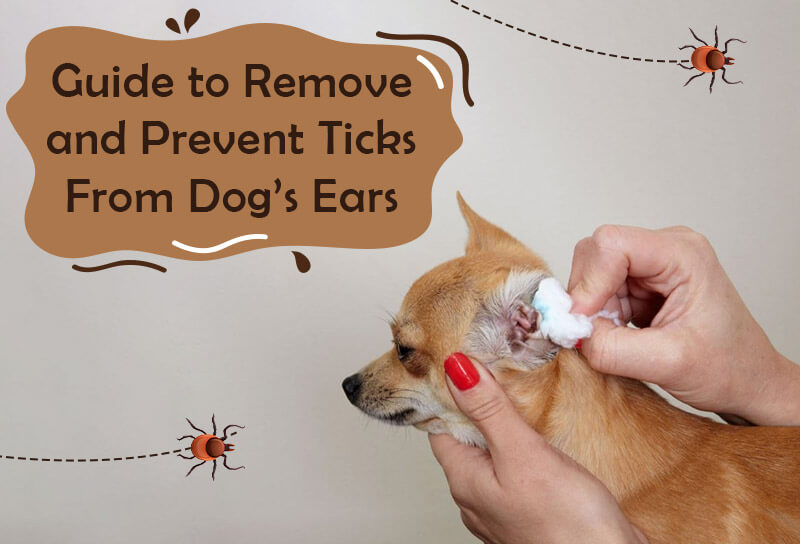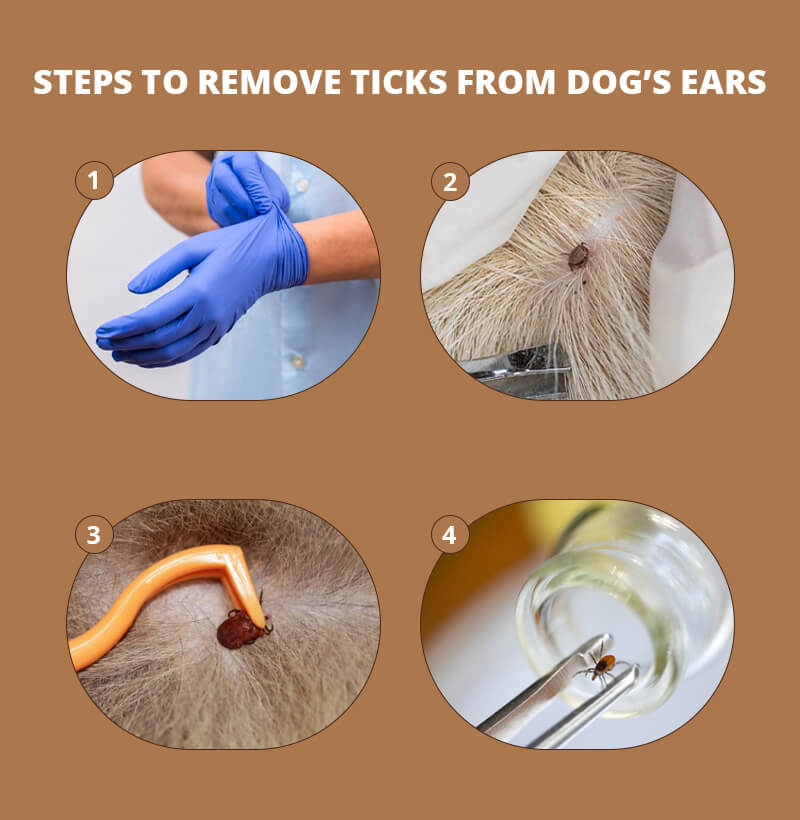
Ticks are one of the most common parasites that can infect your pet and can prove to be dangerous if left untreated. They should be removed as soon as detected in order to stop the spreading of infection further on your pooch’s body. Close observation and timely action to remove the ticks are necessary in order to keep your pet safe from these pesky parasites. Take a look at these guidelines and get rid of ticks from your canine companion:-
How do dogs get ticks
Ticks can get on your dog’s body when they are venturing out for a daily walk or for playing in the garden. The attack of ticks in the warmer season can be more severe due to your pooch staying out for a longer duration, but they stay active all year round and can infect your dog at the smallest of exposure. Ticks are more comfortable in warm, dark and moist environments and will be seen mostly near the tail, between toes, near ears, under the collar, and under the arms.
Ticks do not just suck blood from your pooch’s body, but can also lead to many dangerous tick-borne illnesses like Lyme disease, Rocky Mountain spotted fever, tick paralysis, and Ehrlichiosis which makes tick removal all the more important.
Identifying ticks in dog’s ears

It is best to keep a routine check on your pup’s body immediately after coming back from a walk or outdoor exercise. However, ticks may not always be visible to the eyes. Being alert to the following symptoms and consulting a veterinarian for appropriate guidance is required:-
- Excessive scratching and shaking of head
- Keeping the head tilted
- Discharge of black gunk or other substances from ears
- Showing lethargy and discomfort
- Struggling with maintaining balance
- Scabs on the outer parts of the ears or near the ear canal
Steps to remove ticks from dog’s ears
Keep the following tools handy when you prepare to remove ticks from your dog’s ears:
- Disposable gloves
- Tick remover tool
- Rubbing alcohol
- Cotton swabs
- Small container

Step 1:
Make sure your dog is comfortable before you start with the tick removal process. Target removing only the ticks on the outer part of the ear. Take assistance from your veterinarian for the ticks that are near to ear canal.
Step 2:
Wear gloves, part the hair near the infected area and get a closer look at the tick. Catch the tick using Frontline Pet Care Tick Remover or another similar tick hook, twist it and pull the tick gently.
Step 3:
Put the removed tick in a container, pour alcohol on it and seal it. Once the tick is killed due to alcohol, dispose of the container.
Step 4:
Rub a cotton swab soaked in alcohol around the skin and clean it in order to avoid the spread of any type of infection.
Step 5:
Remove the gloves and dispose them of immediately in the trash, and wash your hands thoroughly.
Step 6:
Repeat the whole process again if you see another tick on your pet’s ears.
Preventing tick infections
No matter how efficiently you remove the ticks from your pet, prevention is always better than cure. Your dog can catch a tick infection at any time of the year. It is required therefore to be alert and proactive in trying to prevent infections from these nasty parasites.
Dogs love to put their head in the sand while playing outside. As ticks like dark and moist surroundings, they cling to the dog’s ears and find their way to the ear canal by wax and debris. Cleaning your dog’s ears helps in getting rid of the wax, debris and odor that the ticks like. You can use any of the following ear cleansers to keep your dog’s ears tidy and clean:-
- Cleanaural Ear cleaner
- Ilium ear drops
Check Price at Canadavetexpress
Along with ear cleaning, using tick treatments that help in controlling tick infections can also help save your pup from misery. Multiple options are available for tick treatment and control. Tasty chewables and tablets can be fed as a treat or can be mixed with food. If your dog is picky, go for a topical treatment or a protective collar. Take a look at some of the products you can use:-
To conclude
Ticks can get easily into your dog’s ears, can spread easily and can make your dog vulnerable to various tick-borne illnesses. Removing the ticks with proper care and by taking appropriate preventive measures, you can save your dog from the attack of these parasites.






